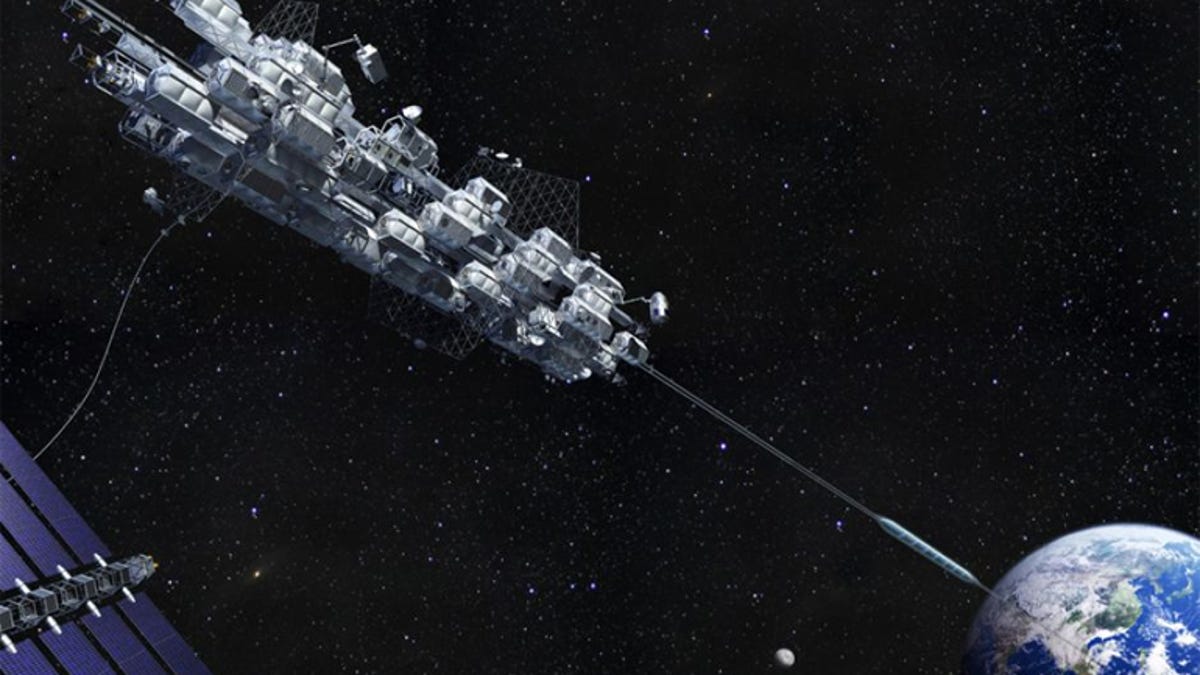Japan's mini space elevator goes to space
And we have liftoff!

This is what a true space elevator might someday look like.
The concept of the space elevator is set to get a workout, following the weekend launch of a pair of satellites bound for the International Space Station, Science News reported Monday.
The experiment, under the auspices of researchers at Shizuoka University in Japan, will be the first movement trial conducted in space as part of the Space Tethered Autonomous Robotic Satellite (STARS) project. The two small STARS-ME satellites will be connected by a 10-meter cable, and a robotic device will travel along it between the satellites. That's a tiny representation of what a full-size space elevator might someday do running from Earth all the way to spacecraft in orbit.
The launch was originally scheduled for Sept. 11, but was delayed for over a week due to "weather and the propulsion system of the rocket," Masahiro Nohmi, who works on the project, told CNET in an email.
If successful, space elevators are expected to significantly cut the costs of transporting people and objects to and from space. Still, there will be a number of steps needed along the way, such as the development of cables resistant to high-energy cosmic rays.
The launch follows earlier ones called STARS, STARS-II and STARS-C in 2009, 2014 and 2016, respectively, of which only STARS still operates in space. "These satellites deployed earlier tether connected mother and daughter satellites," Nohmi explained.
Whereas STARS-Me has the first real elevator. "It has a climber which translates on the tether. That is, the climber translates on tether after deployment, a space elevator. This is the first," Nohmi added.
A new launch known as Stars-AO, which Nohmi described as a "mini telescope cubesat" rather than a tethered satellite, is imminent too, planned for Oct. 29. Stars-AO is derived from "(photos of) Stars (taken by) Astronomical Observation."
"We are very glad that the first space elevator satellite was successfully launched," Nohmi said.
"The space elevator is now in space, on orbit! But we have to make efforts to prepare for operation after releasing it from the ISS. Our important mission is the first space elevator demonstration in the world."
First published Sept. 24, 11:43 p.m. PT.
Update, Sept. 25 at 8:33 p.m. PT: Adds comments from Masahiro Nohmi.

